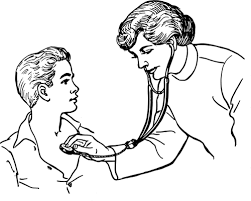DEFINITION:-
Psoriasis is a common chronic inflammatory skin disease consisting of erythematous papules which coalesce to form plaques with distinct borders and characterized by thickened, silvery-scaled patches. It affects 1% to 3% of the world’s population. Psoriasis is a long-lasting and relapsing skin disease that affects the life cycle of the skin.
The exact cause of psoriasis is unknown, but most researchers believe that a combination of several factors such as skin injury, weather, stress, infection, low levels of calcium contributes to the development of this disease.
LOCATIONS AND TYPES:-
Psoriasis can appear anywhere on the body, even on the eyelids, ears, lips, skin folds, hands, feet, and nails. Plaques can be a few small patches or can affect large areas. It’s possible to have psoriasis plaques and scales in more than one location on the body at a time.
There are five types of psoriasis. It’s possible to have more than one type of psoriasis at one time and more than one type in a lifetime.
These are:
1. Guttate Psoriasis: Guttate psoriasis affects roughly 8 percent of people living with psoriasis. Signs of guttate psoriasis include small, round, red spots caused by inflammation. Guttate psoriasis often appears on the arms, legs, and torso; however, it can affect any area of the body.
2. Pustular Psoriasis: Pustular psoriasis affects about 3 percent of people living with psoriasis. Symptoms include pustules (white, pus-filled, painful bumps) that may be surrounded by inflamed or reddened skin. Pustular psoriasis may appear only on certain areas of the body, such as the hands and feet like PPP, or it may cover most of the body.
3. Plaque Psoriasis: Plaque psoriasis is the most common type, affecting up to 80 percent of those with psoriasis. Plaques can appear anywhere on the body as raised patches of inflamed, itchy and painful skin with scales. For some people, the skin may be red with silvery white scales. For others, plaques may look more purple. This may depend on the skin type of the individual. These plaques most often appear on the scalp, knees, elbows, and in or around the belly button and lower back. However, it can affect any area of the body.
4. Inverse Psoriasis: Inverse psoriasis affects one-quarter of people living with psoriasis. Signs of inverse psoriasis include inflamed deep-red skin that is smooth and not scaly. Inverse psoriasis affects skin folds in the body such as underarms, under breasts, in the genital area and buttocks. It can cause severe itching and pain and can be worsened by sweat and rubbing in these areas.
5. Erythrodermic Psoriasis: Erythrodermic psoriasis is rare, affecting about two percent of people living with psoriasis. This type of psoriasis can cause intense redness and shedding of skin layers in large sheets. It often affects nearly the whole body and can be life-threatening. Other symptoms include severe itching and pain, changes in heart rate and temperature, dehydration, and nail changes. It is important to see a health care provider immediately during an erythrodermic flare.
SYMPTOMS OF PSORIASIS:-
Psoriasis signs and symptoms will differ from one individual to another. But here are some of the common symptoms of psoriasis:
• Red patches of skin covered with silvery scales
• Small scaling spots
• Dry, cracked skin with occasional bleeds
• Itching, burning or soreness
• Thickened, pitted or ridged nails
Psoriatic patches can vary from a few spots of scaling to eruptions that cover large areas.
COMPLICATIONS:-
Other health problems may develop as a result of psoriasis. While some people think of it as a skin disease, psoriasis can also affect the bones (Psoriatic arthritis), the muscles, and the metabolic system.
People with psoriasis may experience social exclusion, image issues, and low self-esteem. Together with the physical discomfort, itching, and pain of psoriasis, this can impact on their overall quality of life (QoL). The social and physical demands of this chronic disease may contribute to depression and anxiety.
CASE OF PSORIASIS
1st Visit:
On 12th May 2021, A 35 years old male Mr. AD visited to me with the complaint of Psoriasis. He was suffering from Psoriasis since last year. He was having Psoriasis on the abdomen, chest, thoracic and lumbar back. There were severe lesions of Psoriasis on the abdomen and back. He had severe itching, scaling, and pain on the affected area. The lesions on abdomen and back were red and inflamed. He was extremely anxious and depressed about his lesions.
Anxiety, compulsive tendencies, insecurity, and restlessness – point to Arsenicum, more specifically, an Arsenicum of a non-chilly variety with a volatile temperament. So, on the basis of the totality of symptoms, homeopathic medicines Hydrocotyle 30 and Ars sulph flav 30 was prescribed to him.
2nd Visit:
On 30th May 2021, Within 18 days of prescribing Hydrocotyle, the lesions of Psoriasis was significantly improved, but the condition of intense itching was still persisting. Therefore, the Rhus Tox 30 medicine added for 18 more days.
3rd Visit:
On 19th June 2021, the patient doesn’t have any psoriasis lesions. There is no itching, scaling, and pain in the previously affected areas. No medicine given. The patient continued to be in good condition of his skin since then to date.
ABOUT THE AUTHOR

DR. NISANTH NAMBISON (Honorary Consultant)
BHMS (Chg), M.D (Hom), FBIH (London), PGDCA, MDP (IIM) (Gold Medalist)
- Ass. Professor, Head of Surgery & Computer Department, Govt. Homoeopathic Medical College, Bhopal (M.P)
- Ex-Professor, Faculty of Homeopathy, Malaysia.
- Ex-OSD, Directorate of Indian System of Medicine & Homoeopathy, Madhya Pradesh.
- Ex-Vice-President, HMAI (Homeopathic Medical Association of India) MP State.
- Research consultant & Literature consultant, NL Laboratories Pvt. Ltd.
- Speaker (Homoeopathy & IT), several National & International Conferences.









